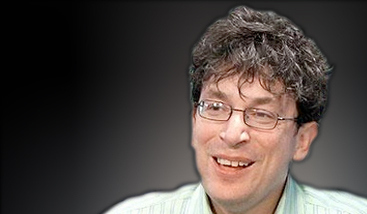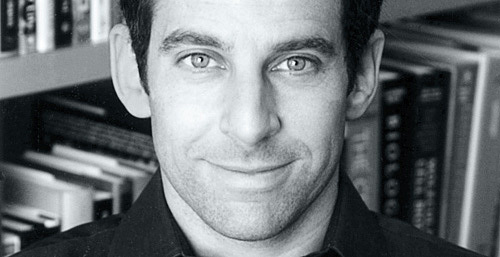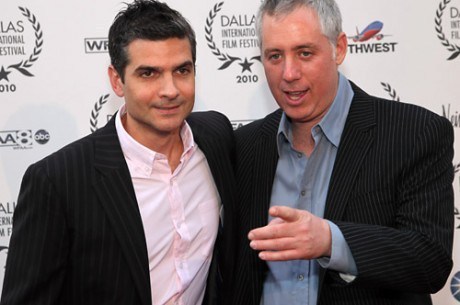Timothy Ferriss's Blog, page 103
July 14, 2014
Two E-Mail Autoresponses That Work
E-mail is the single largest interruption in modern life.
In a digital world, creating time hinges on minimizing it.
The first step towards controlling the e-mail impulse is setting up an autoresponse, which indicates you will be checking e-mail twice per day or less. This is an example of “batching” tasks, or performing like tasks at set times, between which you let them accumulate.
In this post, I will share two of my own tried-and-true e-mail autoresponses, one short and one long.
Your success with batching — whether laundry, phone calls, or e-mail — will depend on two factors: your ability to train others to respect these intervals, and, much more difficult, your ability to discipline yourself to follow your own rules.
So what works?
Before my current examples, let’s look at a basic template from The 4-Hour Workweek. Readers have tested this one in 30+ languages:
Greetings, Friends [or Esteemed Colleagues],
Due to high workload, I am currently checking and responding to e-mail twice daily at 12: 00 P.M. ET [or your time zone] and 4: 00 P.M. ET.
If you require urgent assistance (please ensure it is urgent) that cannot wait until either 12: 00 P.M. or 4: 00 P.M., please contact me via phone at 555-555-5555.
Thank you for understanding this move to more efficiency and effectiveness. It helps me accomplish more to serve you better.
Sincerely,
[Your name]
The above is simple but works. Furthermore, bosses respond better than you’d think. Here’s a real-world example.
Now, on to my current faves…
The short one assumes that anyone without contact info can wait. The longer one provides links so that I can ignore hundreds of email entirely.
Of course, adapt for your own situation and preferences.
#1 – Short and Sweet
[VARIANT ONE - WITH ASSISTANT]
SUBJECT LINE: IMPORTANT — Please Email [Assistant's Name] if Urgent
“Hi All,
Due to other commitments, I’m checking email no more than once a week, often less. If it’s truly urgent (cannot wait a week), please call or email my assistant. If you don’t have her info, thank you for waiting until we get back to the inbox.
All the best to you and yours,
Tim
——————————————–
Invest in tech companies that I back (Past: Uber, Twitter, etc.)
https://angel.co/tim/syndicate
Q: Why is this email five sentences or less?
A: http://five.sentenc.es
[VARIANT TWO - WITHOUT ASSISTANT]
“Hi All,
Due to other commitments, I’m checking email no more than once a week, often less. If it’s truly urgent (cannot wait a week), please call my cell. If you don’t have it, thank you for waiting until I can get back to the inbox.
All the best to you and yours,
Tim”
#2 – Longer and More Comprehensive
SUBJECT LINE: IMPORTANT — Please Email [Assistant's Name] if Urgent
“Hi All,
Sadly, due to deadlines, I am unable to read or respond to most email. Please don’t be offended, as this is true even for close friends.
If you genuinely need to reach me urgently (if it can wait a week, it’s not urgent) –
- If you have my cell phone, try and call or text me.
- Otherwise, please email [assistant's email address].
For other contacts besides [assistant], please go here:
[insert "Contact" page URL from website]
Thanks very much for understanding!
All the best to you and yours,
Tim
P.S. If you are emailing about publishing or book marketing advice, here are the resources I’ll point you to:
BOOK MARKETING ADVICE
1) For a popular recap of my launch for The 4-Hour Body, which hit #1 New York Times, here is 12 Lessons Learned While Marketing “The 4-Hour Body.”
2) I also found Rick Frishman and Robyn Spizman’s book on book publicity helpful for my first launch.
3) All of the other advice I might give, probably more in many cases (as I can use
links) can be found here:
http://www.fourhourworkweek.com/blog/2014/02/04/how-to-get-published/
And here:
http://www.fourhourworkweek.com/blog/category/marketing/
Hope that all helps!
Best,
Tim
——————————————–
Tim Ferriss bio: http://www.fourhourworkweek.com/blog/about/
Invest in tech companies that I back (Past: Uber, Twitter, etc.)
https://angel.co/tim/syndicate“
What About Yours?
Autoresponders are both an art (due to wordsmithing) and an evolving science, as complaint rates, percentage decreases in inbound email, etc. can all be tested.
PLEASE share your own findings and autoresponses in the comments below! Non-English autoresponses are also welcome. What has worked for you and what hasn’t?
However, thank you for NOT spamming the comments with a bunch of your website links, unless relevant, as is sometimes the case with FAQs, etc. Spam will be deleted.
For more examples — both good and terrible — see below.
Further Resources
Not-To-Do Lists, Drugs, and Other Productivity Tricks
The Best (and Worst?) Autoresponders of 2007
The 4-Hour Workweek Tools
How to Check E-mail Twice a Day… And Have Your Boss Accept It

July 11, 2014
The Tim Ferriss Show, Episode 18: James Altucher on How to Say “No”, Fail Better, and Build Businesses

James Altucher
Listen on iTunes, download (right click “save as”), or stream it now below:
This episode of The Tim Ferriss Show is sponsored by Bluehost, which I used for my first WordPress blog, and I still use them for sites today. Click here for a special offer!
Now, on to our guest…
James Altucher is an American hedge fund manager, entrepreneur, and bestselling author. He has founded or co-founded more than 20 companies, including Reset Inc. and StockPickr. 17 have failed, and 3 have made him tens of millions. He has published 11 books, the newest of which is The Power of No.
Join us in a conversation about just about everything, including: how to say “no” to requests, how to learn from failure, and how to build businesses. More in the show notes below.
Click here to subscribe/listen to the show on iTunes.
Click here to subscribe to the show via RSS (non-iTunes feed).
For those who enjoy reading, here is the full transcript.
If you have a second, please leave me an honest rating and review on iTunes by clicking here. It will help the show tremendously, including my ability to bring on more incredible guests. Thanks!
Show Notes and Select Links from Episode 17…
Why James almost ended up homeless after making millions
How a daily routine can mitigate risk
The “1% goal” that changes his life drastically every 6 months
Why he considers news media to be “junk food,” and what he reads instead
Why and how his writing exploded in popularity
How “being vulnerable” on his blog almost permanently damaged James’s relationship with his daughter
The myth of “job security,” and how to chart your own path
And much more…
LINKS FROM EPISODE 17
Visit the Tim Ferriss Book Club to find a new book each month (or so) that has changed my life
Seth Godin’s blog
The Bloggess
David Thorne’s Blog
Read my blog post: “Productivity” Tricks for the Neurotic, Manic-Depressive, and Crazy (Like Me)
Learn more about High on Crack Street: Lost Lives in Lowell
The transportation network company that’s taking the world by storm (100+ cities and counting): www.Uber.com
Learn more about Oingo - James’s worst venture capital decision
Learn more about Hoop Dreams
Jerry Seinfeld Documentary: Comedian
Maria Popova’s blog
Read Tucker Max’s stories
James Altucher’s blog
James Altucher on Twitter: @jaltucher
The James Altucher Show Podcast
Ask Altucher Daily Podcast
Books Mentioned in the Episode
Antifragile: Things That Gain from Disorder by Nassim Nicholas Taleb
The Kite Runner by Khaled Hosseini
A Thousand Splendid Suns by Khaled Hosseini
Brain Rules: 12 Principles for Surviving and Thriving at Work, Home, and School by John Medina
The Power of No: Because One Little Word Can Bring Health, Abundance, and Happiness by James Altucher
Choose Yourself! by James Altucher
Dynamic Hedging: Managing Vanilla and Exotic Options by Nassim Nicholas Taleb
Fooled by Randomness: The Hidden Role of Chance in Life and in the Markets by Nassim Nicholas Taleb
The Black Swan: Second Edition: The Impact of the Highly Improbable: With a new section: “On Robustness and Fragility” by Nassim Nicholas Taleb
Freakonomics: A Rogue Economist Explores the Hidden Side of Everything by Steven D. Levitt and Stephen J. Dubner
Outliers: The Story of Success by Malcolm Gladwell
Losing My Virginity: How I Survived, Had Fun, and Made a Fortune Doing Business My Way by Richard Branson
Jesus’ Son: Stories by Denis Johnson
Fight Club by Chuck Palahniuk
Other Authors Mentioned in the Episode
Books by Ernest Hemingway
Books by Stephen J. Dubner
Stories and books by Raymond Carver
Stories and books by Denis Johnson
Stories and books by Amy Hempel
###
For all episodes of The Tim Ferriss Show, including links and show notes, visit this page.

July 1, 2014
The Tim Ferriss Show, Episode 16: Joe De Sena on Grit, Endurance, and Building Empires

Listen on iTunes, download (right click and “save as”), or stream it in the below player now:
This episode is brought to you by…you guys. To help keep this podcast going, please check out the Tim Ferriss Book Club, where, every 1-2 months, I highlight one book that’s changed my life. Here are the first four books.
Now, on to our guest…Joe De Sena.
Joe De Sena is the co-founder of The Death Race, Spartan Race (1M+ competitors), and more. Among other things, he has completed the famously grueling Iditarod dogsledding race…on FOOT. And what about the Badwater Ultramarathon (135 miles at over 120 °F/49 °C), Vermont 100, and Lake Placid Ironman? He did all of those in ONE WEEK. The man is a maniac, and he’s a very strategic businessman.
This episode covers his story, as well as his approaches to grit, endurance, and building empires.
Click here to subscribe/listen to the show on iTunes.
Click here to subscribe to the show via RSS (non-iTunes feed).
This show’s had more than two million downloads…but only 550 or so reviews! WTF?! If you’d like me to continue doing these podcasts, please leave a short one here. It will help the show tremendously, including my ability to bring on more incredible guests.
Show notes and links (e.g. mentioned books, resources) can be found below.
Enjoy!
If you’ve missed previous episodes, here are two you might enjoy:
Show Notes and Select Links from Episode 16
The story of his entrepreneurial beginnings – pool boy to the organized crime figures of New York
Becoming an expert in women’s clothing
How he ended up on Wall Street, and why it led Joe to adventure races
What is the Death Race, and who enters a race with a name like that?
3 races and a wedding (saying “yes” can get you in trouble)
How the Spartan Race became a global phenomenon
Behind the scenes of Spartan Up!
Much more….
LINKS FROM EPISODE 16
Visit the Tim Ferriss Book Club to find a new book each month (or so) that’s changed my life
Death Race – “Every man dies, but not every man lives”
Obstacle Course Races: Spartan Race
The last great race: Iditarod
EcoChallenge
Learn more about the Badwater Ultramarathon
Vermont 100 Mile Endurance Race
Spartan Up! by Joe De Sena (the official website)
Books Mentioned in the Episode
Atlas Shrugged by Ayn Rand
Shogun by James Clavell
The One-Minute Manager by Ken H. Blanchard
Spartan Up!: A Take-No-Prisoners Guide to Overcoming Obstacles and Achieving Peak Performance in Life by Joe De Sena

June 24, 2014
The Tim Ferriss Podcast, Ep 15: Neil Strauss, Author of The Game
Listen on iTunes, download (right click and “save as”), or stream it in the below player now:
This episode is brought to you by…you guys. To help keep this podcast going, please check out the Tim Ferriss Book Club, where, every 1-2 months, I highlight one book that’s changed my life. Here are the first four books.
Now, on to our guest… Neil Strauss!
You asked for him as a guest, so here he is. We had a blast, and I learned a TON.
Neil has written 7 New York Times bestsellers, including The Game: Penetrating the Secret Society of Pickup Artists. He’s also been an editor at Rolling Stone and a staff writer for The New York Times. Not only that, but he’s built highly profitable companies and is an all-around hilarious guy.
Even if you *never* want to write, his thinking can be applied nearly everywhere.
In this episode, we discuss life, maximizing creativity (and creative output), and generally answer the questions:
How did he become a creative powerhouse? How does he consistently create amazing work?
How does he overcome writer’s block and other pitfalls?
What are Neil’s favorite books and movies?
How did Neil become a master conversationalist, and how can you?
What’s next?
Click here to subscribe/listen to the show on iTunes.
Click here to subscribe to the show via RSS (non-iTunes feed).
When you have a second, please leave me an honest rating and review on iTunes by clicking here. It will help the show tremendously, including my ability to bring on more incredible guests. This show’s had nearly two million downloads…but only 550 or so reviews! If you’re listening, please leave a short one here.
Show notes and links (e.g. mentioned books, resources) can be found below.
Neil is a close friend, and this is one of my favorite conversations we’ve had together. Please ping him on Twitter (@neilstrauss) to let him know what you thought.
Enjoy!
Teasers and Select Links from Episode 15
The story of Neil Strauss’s first rejection by publishers
Why he received hate mail from the great Phil Collins
Neil’s techniques for conducting engaging, one-of-a-kind interviews
Proof that writer’s block doesn’t exist, and what that feeling really is
A deep-dive into Neil’s creative process
How the art of empathy improves any creative endeavor
How to hater-proof your book, Eminem-style
The importance of figuring out what your “white tennis shoes” are and removing them from your writing space
The books that Neil gifts the most
LINKS FROM EPISODE 15
Visit the Tim Ferriss Book Club to find a new book each month (or so) that’s changed my life
Paul Graham’s Essay - Maker’s Schedule, Manager’s Schedule
Freedom - Internet-blocking productivity software
Rescue Time -Time management software for staying on track
Intego Family Protector -Mac Parental Control Software
Joel Stein’s Writing My Memoir Palin-Style
Books Mentioned in the Episode
On the Shortness of Life by Seneca
The Game by Neil Strauss
Emergency: This Book Will Save Your Life by Neil Strauss
The Dirt: Confessions of the World’s Most Notorious Rock Band by Neil Strauss
Everyone Loves You When You’re Dead: Journeys into Fame and Madness by Neil Strauss
The Art of Nonfiction: A Guide for Writers and Readers by Ayn Rand
One Hundred Years of Solitude by Gabriel Garcia Marquez and Gregory Rabassa
The Painted Bird by Jerzy Kosinski
Life Is Elsewhere by Milan Kundera

June 19, 2014
Why Can’t You Draw The Face of a Penny? Understand the Reason and Learn Spanish Twice as Fast
Allow me to explain using a related problem.
Vocabulary lists in a run-of-the-mill Spanish textbook usually look something like the below, taken from real-world sources I won’t shame by naming:
La mano – the hand
El arbol – the tree
Las muñecas – the wrists
¡Nos vemos mañana! – See you tomorrow!
Mande? – Sorry? Pardon? What did you say?
Ahorita vengo! – I’ll be back in a minute!
Pretty typical, right?
Sadly, this format is also priming students for failure. Two reasons:
Spanish is listed first, so we’re training recognition. If you want to be able to speak (produce) Spanish, you should list English first, then Spanish: cue and target. For at least the first month, you will be translating from English in your head before most speaking. Have your materials mimic this process, or you’re working backwards.
Incredibly, almost no textbooks get this ordering right. If you train for recall, you get recognition automatically; if you train for recognition, recall is terrible, or as slow as molasses.
Think I’m exaggerating? How many times have you handled or seen pennies and quarters in your life? Tens of thousands of times? Millions? Try and draw both sides of either from memory. Recognition does not = recall. You have to train specifically for the latter.
A fixed list equals inflexible recall. By illustration, answer this: what number is the letter “L” in the alphabet? 5th, 14th, which? What is the third line of your national anthem? Slow, isn’t it? The answers depend on order – on the pieces before them acting as cues. If you learn words in a fixed list, the preceding words act as a recall crutch for your target word. You’ll eventually get it, but it’s plodding and haphazard. This is a major problem. This is also why, 10 years later, I can still sing (poorly) a few entire songs in Italian, but I could never recall those words independently for conversation.
We want RAM—random-access memory—where we can pull any word from memory quickly.
Mixing up flash cards accomplishes this, as does a software program like Anki or Duolingo (I advise), which does it automatically.
If you have a textbook with a fixed list, just practice doing them backwards and also in evens, odds, every-third item, etc.
¡Mucha suerte, ché!

June 18, 2014
The Tim Ferriss Show, Episode 14: Sam Harris, PhD on Spirituality, Neuroscience, Meditation, and More

Sam Harris, Ph.D.
Listen on iTunes, download, or stream it in the below player now:
This episode of The Tim Ferriss Show is sponsored by Bluehost, which I used for my first WordPress blog, and I still use them for sites today. Click here for a special offer!
Now, on to our guest… Sam Harris.
Sam Harris is a neuroscience Ph.D. and the author of the bestselling books, The End of Faith, The Moral Landscape, Free Will, and Lying. His work have been discussed in The New York Times, Time, Scientific American, Nature, Newsweek, Rolling Stone, and many other journals.
In this episode, we explore the science of lying, uses and types of meditation, psychedelic drug uses and risks, spiritual experiences, and more. It’s really a discussion of the human experience, and how to optimize it without harming others.
Click here to subscribe/listen to the show on iTunes.
Click here to subscribe to the show via RSS (non-iTunes feed).
If you have a second, please leave me an honest rating and review on iTunes by clicking here. It will help the show tremendously, including my ability to bring on more incredible guests. Thanks!
Once you’ve listening to this episode, let Sam (@samharrisorg) know on Twitter what you found most valuable or compelling.
Enjoy!…
Show Notes and Select Links (Resources, Books, Etc.) from Ep 14
Where Tim and Sam first met, and why shaking hands was not required…or really an option.
What are fMRI machines, and how does Sam use them for his studies of belief, disbelief, and uncertainty?
The faults of traditional lie detectors and the future of belief detectors.
Why “micro-expression” analysis is probably overstated.
Using meditation or pharmacology (drugs) to help present-state awareness and well-being.
What types of meditation Sam recommends and why.
Sam’s most controversial beliefs (or perhaps positions) of the last several years.
Why Malala Yousafzai should have won the Nobel Peace Prize…but why it’s probably a good thing she didn’t.
Are self-righteous but guilt-ridden white males ruining freedom of speech?
Examining self-transcendence and love.
Psychedelic drugs as an important rite of passage for human beings.
Which psychedelic drugs Sam has found most therapeutically valuable.
What are the powers and liabilities (or risks) of psychedelic drugs?
Why the only way to ensure you don’t have a bad trip is not to take a trip at all…
Debated by Tim and Sam — Is it only possible to truly hit the center of the spirituality bullseye through meditation (a.k.a. “try rugs, not drugs”)?
SOME LINKS FROM EPISODE 14:
Who is Lucius Annaeus Seneca?
Paul Ekman’s work on Micro Expressions
Who is Malala Yousafzai?
Who is Ayann Hirsi Ali?
Brandeis University controversy with regards to Ayann Hirsi Ali
On the “freedom to offend an imaginary god” blog post
How to meditate – blog post
Drugs and the Meaning of life – blog post
6 Health Benefits of Yerba Mate Tea
The Riddle of the Gun – blog post
BOOKS FOR BRAINSTORMING, MENTIONED IN EPISODE 14:
Waking Up: A Guide to Spirituality Without Religion – by Sam Harris
Mindfulness in Plain English – by Bhante Gunaratana
The Experience of Insight – by Joseph Goldstein
Wherever You go, There You are – by Jon Kabat-Zinn

June 16, 2014
Not-To-Do Lists, Drugs, and Other Productivity Tricks
This is a short post of things you may have missed.
First, three short (
The 9 Habits to Stop Now — The Not-To-Do List (iTunes or stream below)
Drugs and the Meaning of Life (iTunes or stream below)
Productivity” Tricks for the Neurotic, Manic-Depressive, and Crazy (Like Me) (iTunes or stream below)
Second, I’ve put up about a dozen highlights from other episodes — 1-3-minute clips on my YouTube page. If you enjoy them, I’ll put up more, so let me know in the comments!
Here are a few to start with:
Third, below are some podcasts with friends. I had a blast on all of them, and all of them are different:
Bryan Callen interviews me
James Altucher interviews me
Robb Wolf interviews me
Dave Asprey (Bulletproof Radio) interviews me
Pat Flynn (Smart Passive Income) interviews me

June 10, 2014
The Tim Ferriss Show, Episode 12: Dr. Rhonda Patrick on Life Extension, Performance, and Much More

Dr. Rhonda Patrick
This episode of The Tim Ferriss Show is sponsored by Bluehost, which I used for my first WordPress blog, and I still use them for sites today. Click here for a special offer!
Now, on to our guest…
My guest this episode is Rhonda Perciavalle Patrick, Ph.D., who works with Dr. Bruce Ames, the 23rd most-cited scientist across ALL fields between 1973 and 1984 (!).
Dr. Patrick also conducts clinical trials, performed aging research at Salk Institute for Biological Studies, and did graduate research at St. Jude Children’s Research Hospital, where she focused on cancer, mitochondrial metabolism, and apoptosis.
What does that all mean? Time is precious, right? Long podcast needs to be worth it, right? Here you go…
Whether you want to extend life, inexpensively buy a stem-cell “insurance policy” (hint: related to the Tooth Fairy), or guard against cancer, she will have a surprise insight for you.
In this episode, we cover a lot:
Are there simple methods for extending lifespan? What looks most promising?
What are the easiest ways to minimize your risk of cancer?
What are the dangers of taking certain common supplements? What’s worth it and what isn’t?
How can diet change the expression of your genes? How can this can be passed on to offspring?
…and much more.
Click here to subscribe to the show on iTunes. This is most helpful to me and the podcast, even if you listen elsewhere!
Click here to subscribe to the show via RSS (non-iTunes feed).
Or stream the show in the player below:
If you have a second, please leave me an honest rating and review on iTunes by clicking here. It will help the show tremendously, including my ability to bring on more incredible guests. Thanks!
Show notes and links are below, and please find Rhonda on Twitter to say hello or ask questions. She’s very responsive.
Enjoy!…
Select Links and Resources for Episode 12
SOME LINKS FROM THE EPISODE:
George Carlin – http://www.georgecarlin.com
Dr. Bruce Ames – http://en.wikipedia.org/wiki/Bruce_Ames
St. Jude’s donation link – https://shop.stjude.org/GiftCatalog/donation.do?cID=14262&pID=24671
Bluehost offers – http://www.bluehost.com/tim
Wellness FX – http://www.wellnessfx.com
Vitamix 5200 Blender
StemSave.com – http://www.stemsave.com/index.aspx
National Pulp Dental Laboratory – http://www.ndpl.net
Dr. Rhonda Patrick’s homepage – http://foundmyfitness.com
Rhonda on Twitter – @foundmyfitness
Rhonda on Facebook – facebook.com/foundmyfitness
A FEW BOOKS MENTIONED IN THE EPISODE:
Nutrition and Physical Degeneration – Weston Price
Wild Fermentation – Sandor Katz and Sally Fallon
Spark – Eric Hagerman
The Paleo Solution – Robb Wolf
Click here to see ALL free episodes of The Tim Ferriss Show, including world-class filmmakers, chess prodigies, investors, and many more.

June 4, 2014
The Tim Ferriss Show, Episode 10: Brian Koppelman, Co-writer/Producer of Rounders, The Illusionist, Ocean’s Thirteen

The writing duo: David Levien and Brian Koppelman
This episode of The Tim Ferriss Show is sponsored by Bluehost, which I used for my first WordPress blog, and I still use them for sites today. Click here for a special offer!
Now, on to our guest…
“Everyday, it’s about building a practice that enables you to try and forget that you’re afraid.”
- Brian Koppelman
My guest in this episode is Brian Koppelman.
Brian is a screenwriter, novelist, director, and producer. He is best known as the co-writer of Ocean’s Thirteen and Rounders, as well as a producer of The Illusionist and The Lucky Ones. He has directed films including Solitary Man, starring Michael Douglas.
In this episode, we explore how he got started, how he handles rejection, his big breaks, his creative process, and much, much more.
How does Hollywood work for writers?
How did he finally break through?
How did he discover singer-songwriter Tracy Chapman?
Will there be a movie for The 4-Hour Workweek?!?
His lessons and principles can be applied almost anywhere.
Click here to subscribe/listen to the show on iTunes.
Click here to subscribe to the show via RSS (non-iTunes feed).
Or stream the show in the player below:
If you have a second, please leave me an honest rating and review on iTunes by clicking here. It will help the show tremendously, including my ability to bring on more incredible guests. Thanks!
Show notes and links are below, and please let Brian (@briankoppelman) know on Twitter what you found most valuable or hilarious. He’s a good dude and loves to teach.
Enjoy!…
Show Notes for Episode 8 (Thanks, Ian!)
Tips on starting as a writer and moving into production and directing
The origins of the movie Rounders and what it took to create the screenplay
The writing routine of David Levien and Brian Koppelman while writing Rounders
The story of selling their first screenplay
Strategies for working with a writing partner
Making the decision to become a producer
The connections needed to create The Illusionist with Edward Norton
How an “option” agreement works for a writer when selling a screenplay
Tips on creating empowering relationship when representing an artist
How to secure rights to stories for film adaptation
On the disruptive force that is Tracy Chapman, and how they faced rejection together
How to cultivate mastery of screenwriting as a craft
“Hollywood is a land of self-invention.” – Brian Koppelman
SOME LINKS FROM EPISODE 8
Listen to Brian Koppelman’s podcast, The Moment
As mentioned in the interview, listen to John Hamburg on The Moment
The Con-Men, Gurus and the Screen Writing Instruction Industrial Complex
Listen to screen writing podcast Script Notes
Learn about and get a copy of What Makes Sammy Run by Budd Schulberg. The “legendary book about making your way in Hollywood”
Free download of Tony Gilroy’s screenplay of Michael Clayton
Learn about morning creativity rituals: The Morning Pages by Julia Cameron, Daily Rituals (schedules of 150+ creatives) by Mason Currey
The War of Art – Stephen Pressfield
Connect with Brian Koppelman : Website | Twitter | Podcast
We all struggle to get it right. Six second screenwriting lessons. No. 274. #sixsecondscreenwriting https://t.co/S7UBcc0sAY
— Brian Koppelman (@briankoppelman) June 4, 2014
A Few Quotes of Many:
“For artists, there’s a very fine line between delusion and belief.” – Brian Koppelman
“What unifies every part of my journey is I always lead with my curiosity, obsession, or fascination.” – Brian Koppelman
“The step that a lot of people miss is a dispassionate evaluation of the reasons [for rejection]. If you can dispassionately evaluate the reasons for rejection and find them with merit, you can address them; if without merit, you can ignore them.” - Brian Koppelman
“If you are rigorous in your own R&D in whatever your area is, you do your own testing, and you really stress-test the thing that you do, I think that gives you a tremendous amount of inner fortitude when you come up against the monolith.” – Brian Koppelman

June 3, 2014
Need to Borrow Some Strength Today? Watch This.
###
People often ask me, “Who inspires you? Who do you look up to?” One immediate answer is Kyle Maynard.
I’ve been blessed to spend time with Kyle, who encourages you — in the most powerful, unspoken of ways — to do more, be more, and help more.
How do you compete in wrestling or MMA without arms or legs? How on earth do you climb Kilimanjaro on, not your hands and knees, your elbows and knees? How do you face the challenges no one thinks you can?
Life can be overwhelming. Hope can be lost. Whether you’re facing a little self-doubt, an extended depression, or the darkest of thoughts, I suggest you watch the above video.
Thank you to BJJ Caveman for reminding me to put this up. Damn, it’s powerful stuff.
Good luck, everyone, with whatever battles you’re fighting inside or outside of you.
You are not alone.




